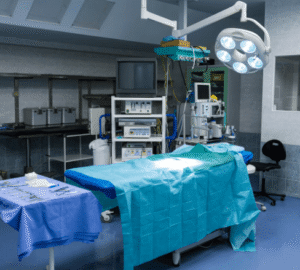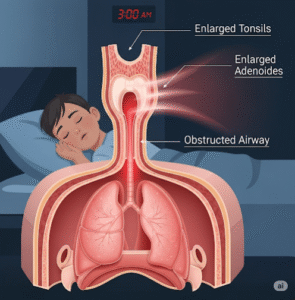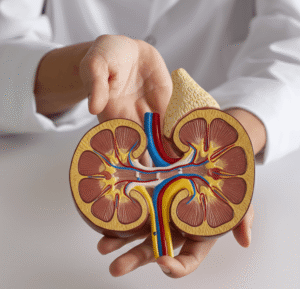Overview
Tubal Ligation is a permanent surgical procedure for female sterilization, involving the blocking, sealing, or cutting of the fallopian tubes to prevent pregnancy. It is one of the most effective contraceptive methods, providing long-term birth control without the need for ongoing daily attention. South Korea offers advanced gynecological surgical services, including minimally invasive laparoscopy and outpatient procedures, ensuring safety, precision, and rapid recovery. Tubal Ligation is widely available for women who seek permanent contraception due to medical, personal, or family planning reasons.
What is Tubal Ligation?
Tubal Ligation, often referred to as “getting your tubes tied,” is a surgical procedure that prevents eggs from traveling from the ovaries to the uterus, thereby eliminating the possibility of fertilization. The procedure can be performed using several techniques:
- Laparoscopic Tubal Ligation: Small incisions in the abdomen allow the surgeon to access and seal the fallopian tubes using clips, rings, or cauterization
- Mini-laparotomy: A small incision near the bikini line, often used after childbirth, to access and close the tubes
- Hysteroscopic Tubal Occlusion: Non-incisional method inserting devices into the fallopian tubes through the uterus to block them
In South Korea, these procedures are performed by experienced gynecologists using high-precision equipment and strict safety protocols.
Symptoms
Tubal Ligation is a preventive procedure rather than a disease, so symptoms are primarily related to the post-operative period rather than the procedure itself. Common post-procedural experiences include:
- Mild abdominal pain or cramping immediately after surgery
- Temporary nausea or dizziness due to anesthesia
- Minor vaginal bleeding for a few days post-procedure
- Shoulder pain in some laparoscopic cases, caused by residual gas from the procedure
- Temporary changes in menstrual cycle for a few months in some women
These effects are generally short-term and resolve without intervention. Long-term effects are rare, and most women experience normal menstrual cycles post-procedure.
Causes
Tubal Ligation is a deliberate medical intervention rather than a naturally occurring condition, so “causes” refer to the reasons women may choose this procedure:
- Desire for permanent contraception after completing family planning
- Medical conditions making pregnancy risky (e.g., heart disease, high-risk pregnancies)
- Genetic concerns or hereditary diseases
- Preference for a reliable, low-maintenance contraceptive method
- Personal, social, or economic considerations for preventing further pregnancies
South Korean gynecologists provide thorough counseling to ensure that women understand the implications and permanence of tubal ligation.
Risk Factors
Though generally safe, certain factors may increase the risk of complications during or after tubal ligation:
- Obesity, which can make surgical access more challenging
- History of abdominal or pelvic surgery, leading to scar tissue (adhesions)
- Smoking, which can increase anesthesia-related risks
- Certain chronic health conditions, such as diabetes or heart disease
- Advanced maternal age may increase the risk of surgical complications
Preoperative evaluation in Korean clinics includes a comprehensive assessment to minimize risk and optimize outcomes.
Complications
While tubal ligation is considered a safe procedure, possible complications include:
- Infection: Rare, but may occur at incision sites or within the pelvis
- Bleeding: Minimal in most cases, but occasionally requires medical attention
- Injury to surrounding organs: Such as the bladder or intestines, though very uncommon
- Ectopic pregnancy: In rare cases, if pregnancy occurs after tubal ligation, it is more likely to be ectopic
- Failed sterilization: Rare, depending on technique and timing
- Postoperative pain: Usually mild and temporary
- Psychological impact: Some women may experience regret if fertility desires change
Korean hospitals provide careful monitoring, post-operative care, and counseling to reduce these risks.
Prevention
Preventive measures related to tubal ligation focus on avoiding complications and ensuring the procedure’s effectiveness:
- Selecting an experienced gynecologic surgeon
- Preoperative screening for health conditions that may increase surgical risk
- Following pre-surgery instructions, including fasting and medication management
- Proper wound care after surgery to prevent infection
- Attending follow-up appointments to confirm successful tubal occlusion
Education and adherence to medical advice in South Korea significantly reduce the risk of complications.
Treatment Options in Korea
Tubal Ligation itself is the treatment for permanent contraception. In South Korea, the approach includes comprehensive care before, during, and after the procedure:
Diagnosis & Counseling:
- Thorough consultation to confirm suitability for permanent contraception
- Discussion of alternatives, including reversible methods such as IUDs or hormonal contraception
- Assessment of medical history and risk factors
Surgical Procedures:
- Laparoscopic Tubal Ligation: Minimally invasive, with quick recovery and minimal scarring
- Mini-laparotomy: Preferred for immediate postpartum sterilization
- Hysteroscopic Tubal Occlusion: Non-incisional approach, suitable for women seeking minimally invasive options
Postoperative Care:
- Short-term pain management and activity restrictions
- Monitoring for infection or other complications
- Follow-up visits to ensure effective tubal occlusion
- Counseling on recognizing potential ectopic pregnancy signs
Reversal and Alternatives:
- Tubal reversal surgery is complex and not always successful; women are advised that tubal ligation is considered permanent
- For those seeking fertility later, assisted reproductive technologies like IVF may be considered
South Korean gynecologists provide a comprehensive, patient-centered approach, combining advanced surgical techniques, counseling, and follow-up to ensure safety, efficacy, and satisfaction.













